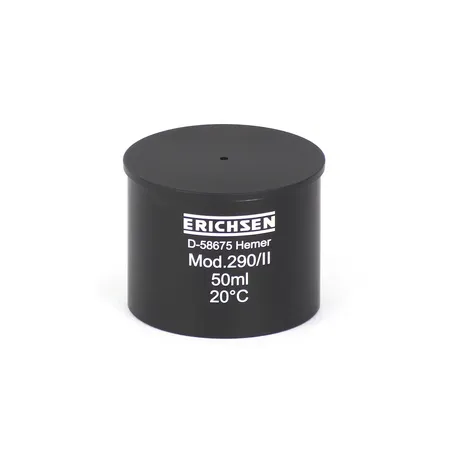The Erichsen Model 290 Pycnometer sets the industry standard for precision in determining the density of paints, liquid, or paste-like substances. This tool is essential for laboratories and manufacturing processes where accurate density measurements are critical. The pycnometer calculates density by the weight difference between its filled and empty states, considering the known volume. With a reference temperature set at 20 °C for paint density, this instrument ensures consistent and reliable measurements.
Design and Functionality
Available in both anodized aluminum and stainless steel, the Erichsen Pycnometers come in volumes of 50 cc and 100 cc, catering to a wide range of applications. The 50 cc version is particularly suited for paste materials due to its ease of handling. These precision instruments are manufactured to a standard tolerance of 0.2%, with options for increased precision and certification from the Official Bureau of Weights and Measures.
Application and Testing Procedure
The Model 290 Pycnometer’s testing procedure is designed to avoid air trapping for accurate measurements. Following the established DIN 53 217 – Part 2 formula for density calculation, this instrument’s reliability is further backed by the Manufacturer’s Certificate M. Each unit is calibrated using distilled water as a test medium, guaranteeing the utmost accuracy in every measurement.

